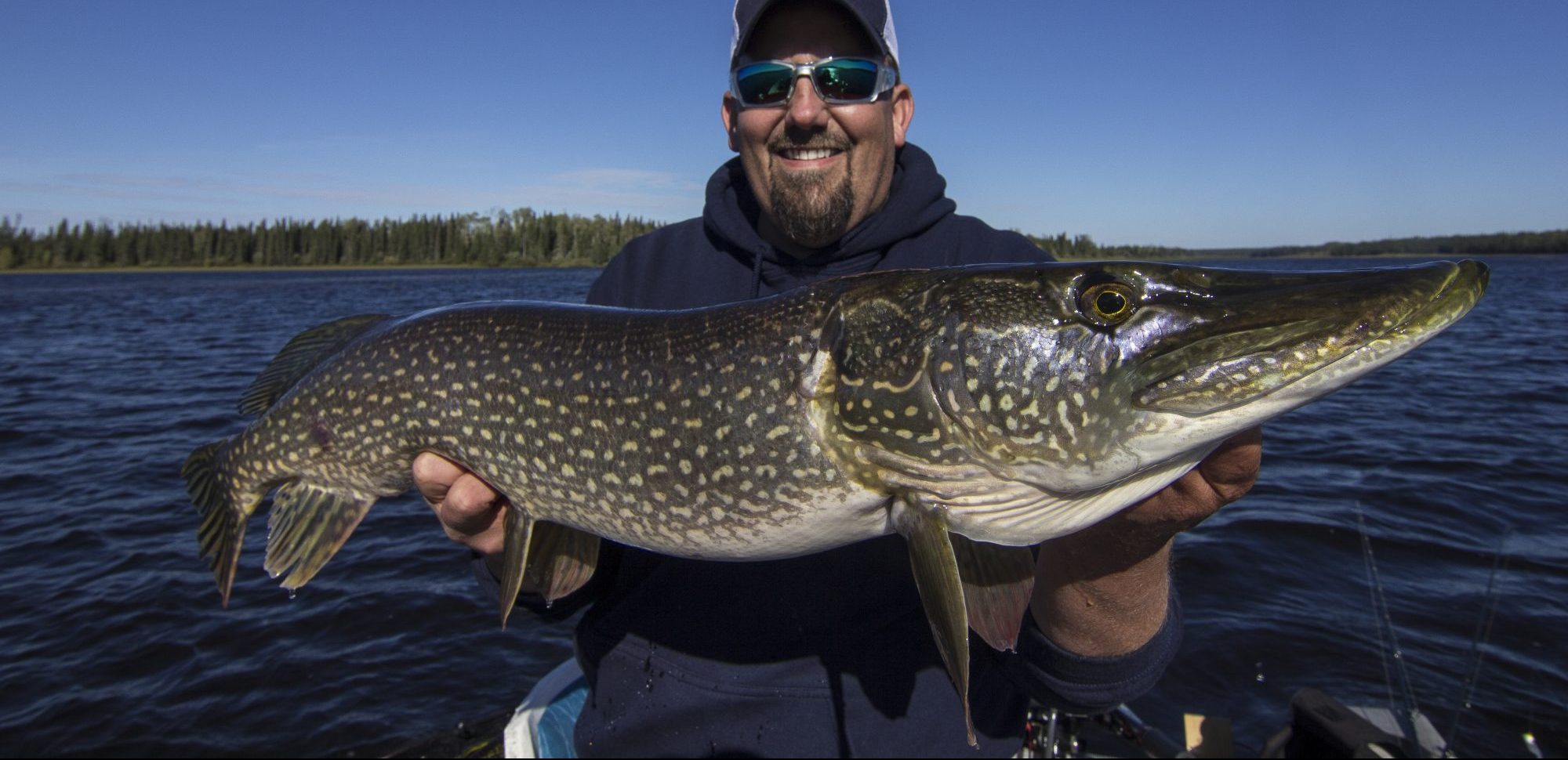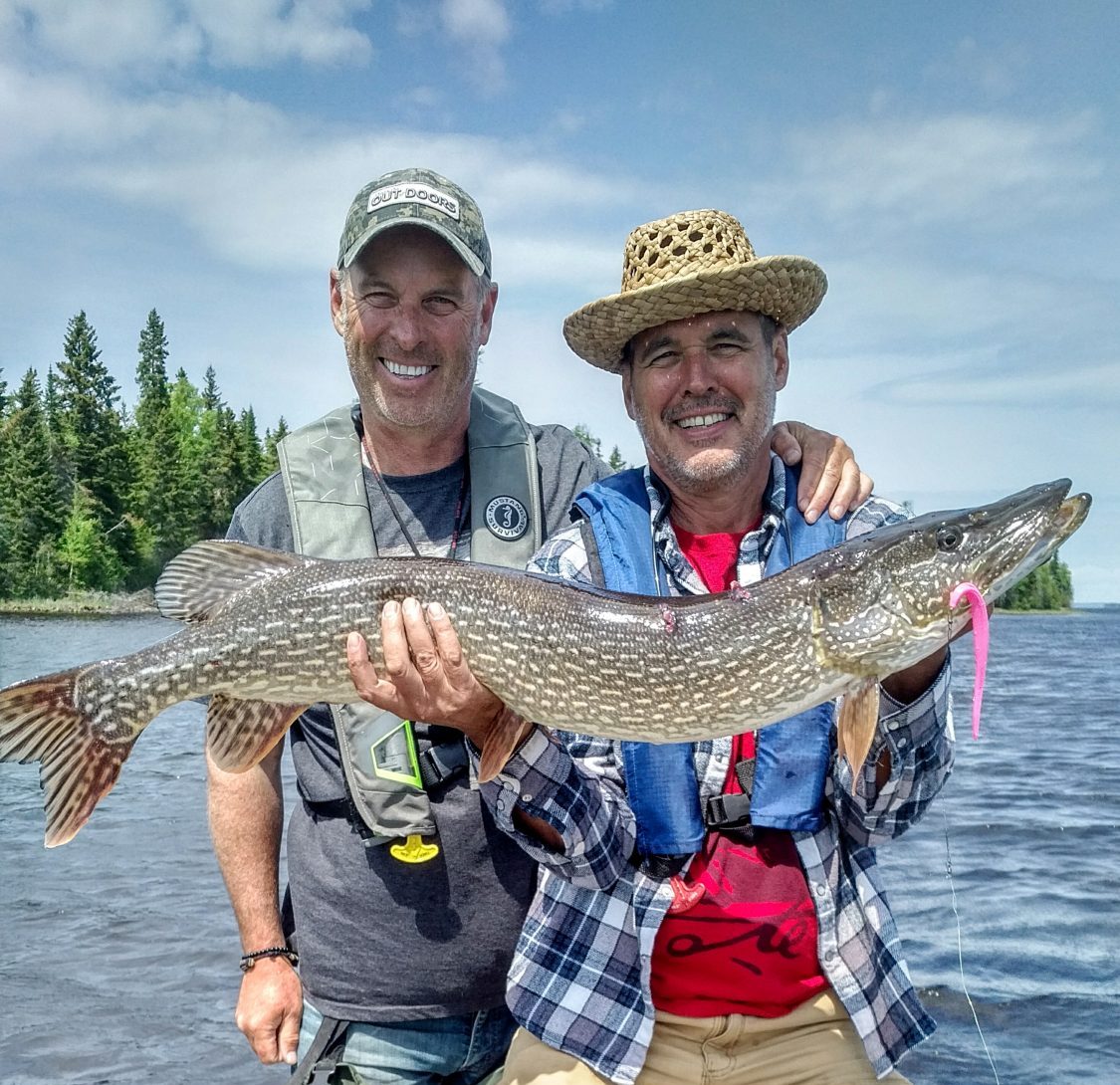
10 Northern Pike Facts
Back to Superior Country BlogThe Northern Pike is native to Ontario and draws massive attention to anglers of all sorts. With their aggressive attitudes, unique characteristics, and ability to grow to massive lengths, it’s no wonder why they’re a popular catch. Superior Country is home to seemingly endless waterways inhabiting Northern Pike and is the perfect destination to reel in a new personal best for a trophy size catch.

1. Scientific Name
Commonly referred to as Pike, Snake, and Gator Fish their scientific name is Esox Lucius. They have a lot of similarities to that of the Muskellunge, however can be easily distinguished from the Muskellunge by the pale spots and rounded extremities of its caudal fin.
2. Life Span
Northern Pike held in captivity usually live an average lifespan of 7-10 years, while in their natural wild habitat live 15-25 years!

3. Size
The Northern Pike grows continuously throughout their life, however once mature they begin growing slower each year. Males mature at 4-5 years, growing to an approximate size of 11-27inches. The females grow quicker than that of the male and mature at 5-6 years, encompassing an average size of 19-30inches. Their average weight is 5-10lbs.
RELATED ARTICLE: 10 Walleye Facts
4. Speed
These apex freshwater predators can reach swimming speeds of 12kmh – 16kmh (8mph-10mph)! Considerably quicker than majority of the fish they share waters with, contributing to their title of being apex predators.

5. Spawning
Spawning takes place in the early spring seasons of March and April. A fertile egg will take one to three, sometimes four weeks to hatch. Once hatched, the Northern Pike grows rapidly over the first year. Preferred spawning conditions are in heavily vegetated areas as they prefer to scatter their eggs, which will then latch to the vegetation. Spawning grounds are in shallow areas that’re only reachable in the spring when the water is high from the ice melt.
6. Habitat
Being a cool-water species Northern Pike typically inhabit slowly moving, high vegetation rivers as well as weedy bays of lakes. Being known as a “hit or miss” fish, they can be found in shallow lake bays provided they have covering from weeds, during mid summer when the lake temperatures rise, you’re more likely to find them in deeper, cooler waters.

7. Diet
The Northern Pike is a carnivorous fish that consumes a large amount each day to uphold their dietary needs. Their diet mainly consists of fish, however, they’re not picky eaters they will consume just about anything that is smaller than them, their own species included. This includes but is not limited to frogs, waterfowl, snakes and even mammals if the opportunity presents itself, such as mice, shrew, and birds. Known as being an ambush predator, they are able to remain completely still for hours, once they detect prey nearby, they strike quickly with supreme accuracy.

8. Common Baits / Lures
Being the non-picky predator they are, you can expect to catch a pike on merely any type of bait and lure. However, the most common and successful are:
- Spoons,
- Crankbaits, Spinnerbaits, Buzzbaits,
- Topwater Lures
- Live Baits: leaches, minnows
- Soft Baits

9. Appearance
Elongated and slender body. Long and flattened snout. Large mouths with sharp teeth. Rear fins and dorsal fins are located further back on the Northern Pike than that of other fish species. They encompass a dark-olive shade of green on their back, top sides and at the top of their heads. Their underside is a cream-white color. Along their sides they have oval shapes spotted of yellow to a tinged shade of white. On their fins their colors vary even wider, green, yellow, and red shades can be found with irregular black markings, some fins do not have any black markings at all.

10. Meat Quality
While the Northern Pike is not the most common fish to eat due to their boney fillets that can be tricky to clean, they are rich in flavor and anglers commonly agree taste better in the winter or when found in deep cold water.
*BONUS*
The largest Northern Pike caught in Ontario weighed 42.21lbs!

 Walleye
Walleye Northern Pike
Northern Pike Lake Trout
Lake Trout Brook Trout
Brook Trout Steelhead
Steelhead Salmon
Salmon Smallmouth Bass
Smallmouth Bass Perch
Perch Superior Picnics
Superior Picnics
